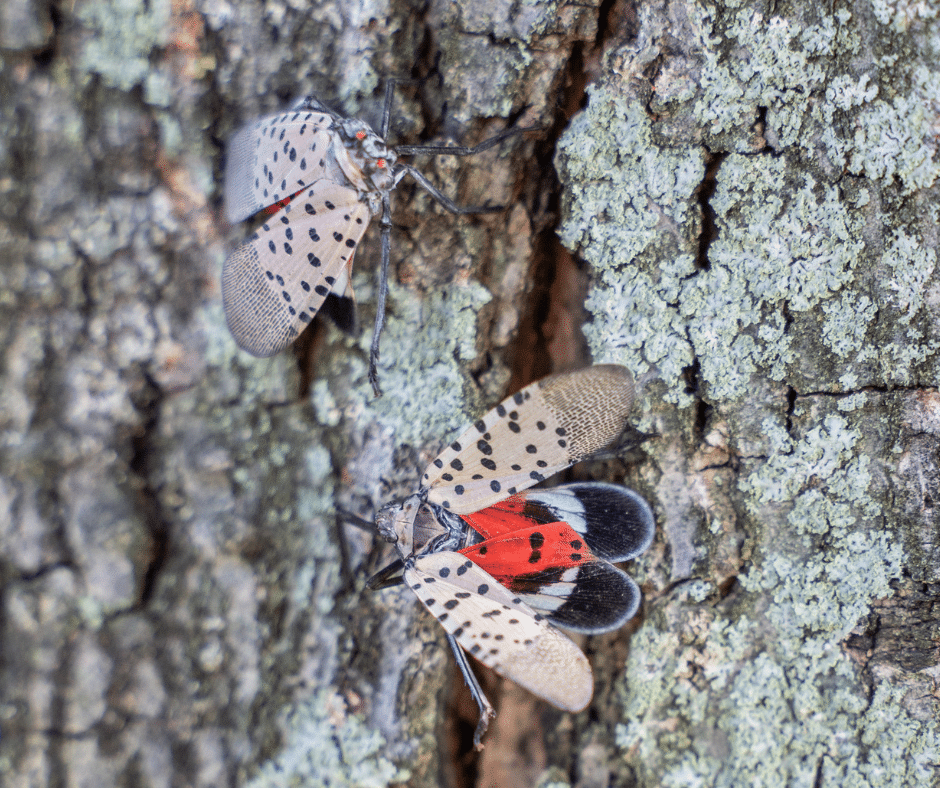The Ecological Impact of NYC’s Spotted Lanternflies
By Natural Areas Conservancy on April 05, 2024

By Natural Areas Conservancy on April 05, 2024

Invasive, non-native, or pest?
When talking about the Spotted Lanternfly (Lycorma delicatula), opinions vary on how best to classify the species. The insect, which is actually a leafhopper (Cicadelliade) and not a fly (Diptera), is local to China, India, and Vietnam and arrived in Pennsylvania in 2014. After establishing in Pennsylvania, the insect quickly spread across the East Coast, first appearing in New York City in 2019. Due to its ecological origin in Asia and the quick spreading dynamics of the species, spotted lanternflies are often referred to as invasive. While invasive is a technical term appearing in several laws regarding the regulation of introduced species, scientists and practitioners are still assessing the direct ecological impact of the spotted lanternfly.
What are invasive species?
The US Department of Agriculture defines an invasive species as:
1) non-native (or alien) to the ecosystem under consideration and,
2) whose introduction causes or is likely to cause economic or environmental harm or harm to human health.
What are non-native species?
While invasive refers to both the ecological origin (the ecosystem in which a species evolved and adapted to in relation with other species in the environment) of a species as well as its potential negative impacts on a system, non-native focuses only on ecological origin. The National Invasive Species Information Center defines non-native as, “species … living in areas where they do not naturally exist,” and emphasizes that non-native and invasive are not interchangeable terms.
How are spotted lanternflies classified?
Given the characteristics of spotted lanternflies (rapidly spreading, non-native to the ecosystem), arguments can be made as to whether they are invasive or simply a nuisance. While spotted lanternflies do not cause mortality to the plants they feed on, the holes created when feeding can increase the susceptibility of plants to disease. As spotted lanternflies feed, they secrete a sugary substance called honeydew which allows black sooty mold to grow on and damage plants. In NYC natural systems and parks, the extent of this damage may be limited, but in agricultural systems, there can be significant economic impacts. As a result of the economic damage, the US Department of Agriculture classified spotted lanternflies as a “pest” —a species with negative economic impacts.
Species classification matters for natural areas management
While federal agencies define spotted lanternflies in different categories, whether or not they directly impact you may shape your opinion. Perhaps you enjoy seeing the colorful and charismatic insects fluttering across the ground. Or you may be an avid bird watcher who enjoys the Northern cardinals and gray catbirds that are drawn to spotted lanternfly populations to feed.
However, you may also feel overwhelmed by the thought of trying to keep the insects from spreading sooty mold in your garden or damaging your crops. In any case, it is important to understand how and why we classify species by both their characteristics as well as their ecological origin, especially when making management decisions to protect our natural areas.
For more information about the spotted lanternfly, see the United States Department of Agriculture’s informational guide on spotted lanternflies.
To learn more about how non-native species impact New York City’s ecology, read our recently published Climate Report.